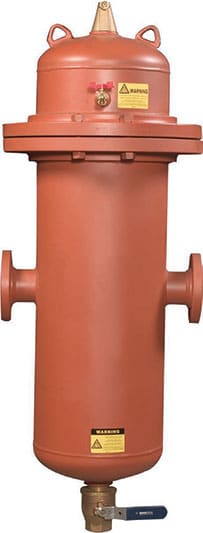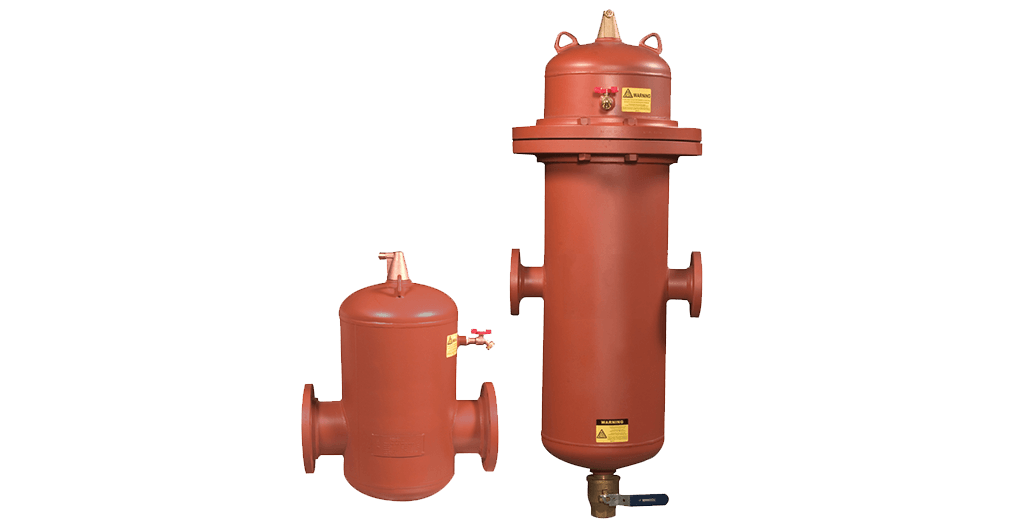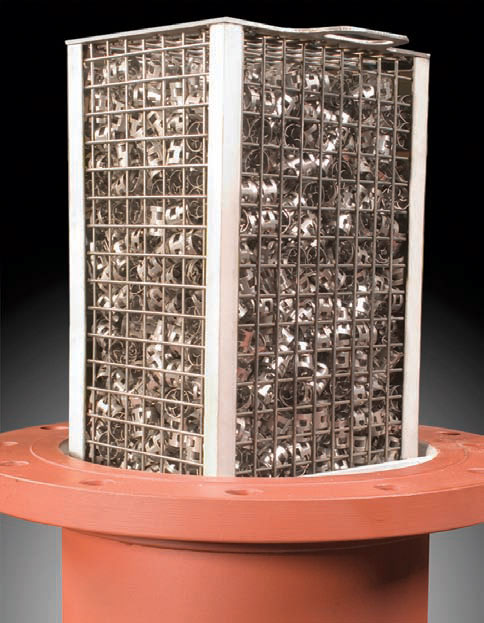Montwood High School
Case Study
Montwood High School
El Paso, Texas
– Case Description
Air Separator Helps Solve Hydronic System Problem in Texas High School

Summary

Air elimination in hydronic systems is an important requirement in terms of system efficiency and comfort. The presence of tiny air bubbles in system water causes noise and contributes to equipment degradation over time due to corrosion caused by bacteria growth. Purging the system repeatedly of un-wanted air requires many contractor call backs.
Montwood High School (part of the Socorro Independent School District) in El Paso, TX, was facing this exact problem with its hydronic heat pump system. The school’s heating system was installed nearly 17 years ago and the trouble began almost immediately. The school is a three-story building, which was built in stages—a contributing factor to the problem. According to Tony Regalado, maintenance engineer, the system never flushed properly and regularly “burped” as air built up in the 218 heat pumps. In addition, algae began to grow when the system’s water temperature dipped below 70 °F.
As a result, the system required constant servicing to drain water from the loop and treat system water for unwanted algae growth. Air separators were placed along the loop to eliminate the air but proved ineffective. The water treatment contractor could not treat the water because they couldn’t first get the air out.
“We were left with a system that constantly developed unwanted air and bacteria growth that we couldn’t get rid of because there was nothing on the market to fix the problem,” says Regalado.
Then, Regalado was introduced to the Taco 4900 Series Air Separator, which was specifically designed for hydronic systems such as the one at Montwood High School, because it provides complete air elimination. Within 30 days after its installation, the 4900 Series Air Separator successfully flushed out the air as well as the algae buildup.
The 4900 Series is able to completely eliminate air because of its patented PALL ring process. Inside each 4900 unit is a PALL ring chamber containing a dense pack of stainless-steel PALL Rings. The PALL Ring chamber optimizes a collision of flowing system water with the PALLRings. As a result of this collision, all of the gas-containing water particles are brought into contact with the entire PALL Ring surface area. Even the smallest microbubble present in the water adheres to the surface of a PALL Ring, allowing coalescence to occur and air to be removed.
The tiniest air bubbles that adhere to the surfaces of the PALL Ring join to form larger air bubbles. These combined bubbles then traverse up through the water and into the air chamber to be released from the unit’s conical venting chamber.
Taco’s application of PALL Rings for air bubble separation is patented and a first for the HVAC industry. PALL rings have a history of use in the processing industry to mix gases with, or separate gases from liquids. PALL ring technology was originally developed in the Netherlands, and Taco has purchased exclusive licensing rights to use the rings in the manufacture of its 4900 Series separators.
Tests conducted at Delft Technical University have unequivocally proved that 4900 Series Air Separators remove all microbubbles from 15-20 microns and up—3 times more effective than comparable air separators currently available. 4900 Series separators remove up to 100% of free air, 100% of entrained air and up to 99.6% of dissolved air in hydronic system fluid. For system dirt and debris the 4900 Series are capable of removing dirt particles as small as 35 microns in diameter. Optional steel strainers can be specified for capturing and removing larger debris. Taco has expanded its 4900 Series product line and now offers both air and air/dirt separators. Series 4900-A models clean a hydronic system of free air and microbubbles; Series 4900 AD models remove both air and dirt. Because the 4900 Series provides higher efficiency, with reduced pressure drops, a somewhat smaller pump can be used for greater system efficiency.
Final Result
The 4900 Series comes in both standard (4.9 ft./s) and high-velocity (11 ft./s) versions,with removable and nonremovable covers. Each version is constructed of steel and has been designed, fabricated and stamped per ASME standards. All models come with a brass conical-shaped air-venting chamber designed to minimize system fluid from fouling the venting assembly. With the installation of the Taco 4900 Series the school’s system has operated without any air-bound problems, and water treatment has been successful as well. “The 4900 Series Air Separator was the answer to our longstanding problem,” says Regalado.
The PALL Ring chamber optimizes a collision of flowing system water with the PALL Rings.As a result, all of the gas-containing water particles are brought into contact with the entire PALL Ring surface area. Even the smallest microbubble present in the water adheres to the surface of a PALL Ring, allowing coalescence to occur and air to be removed.


